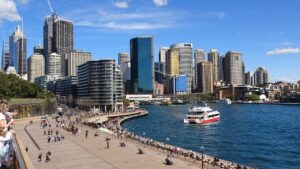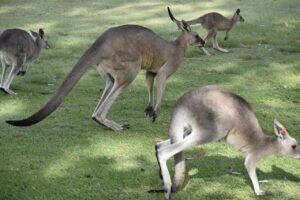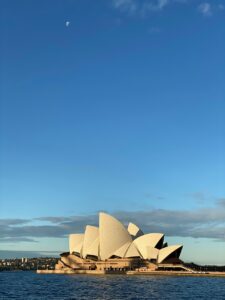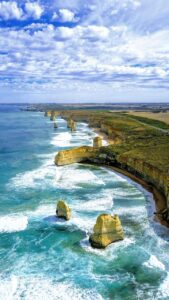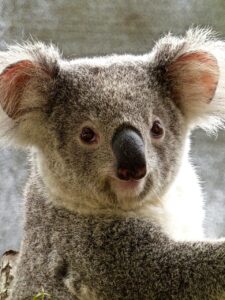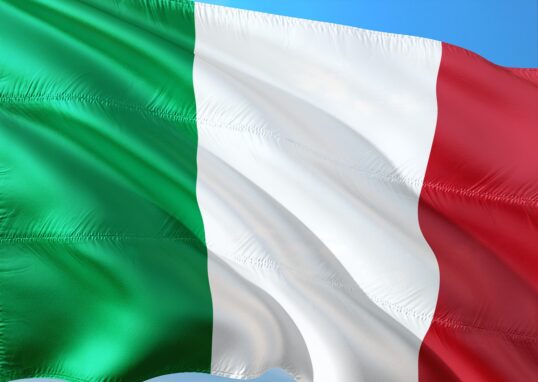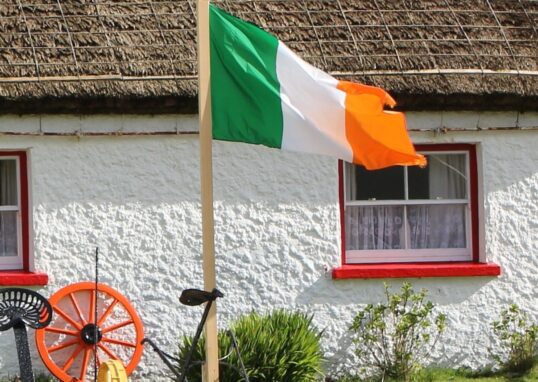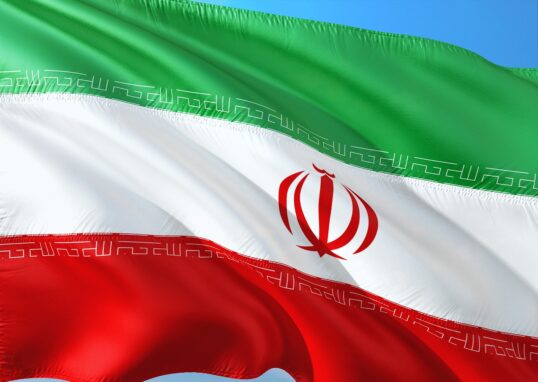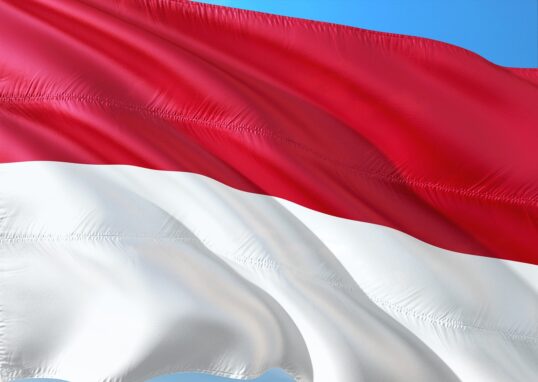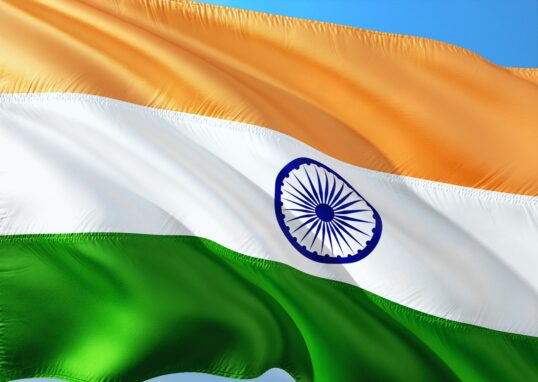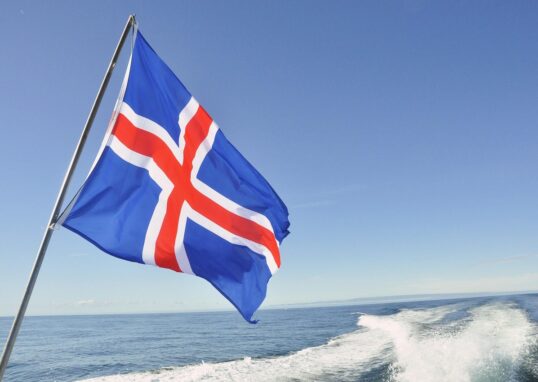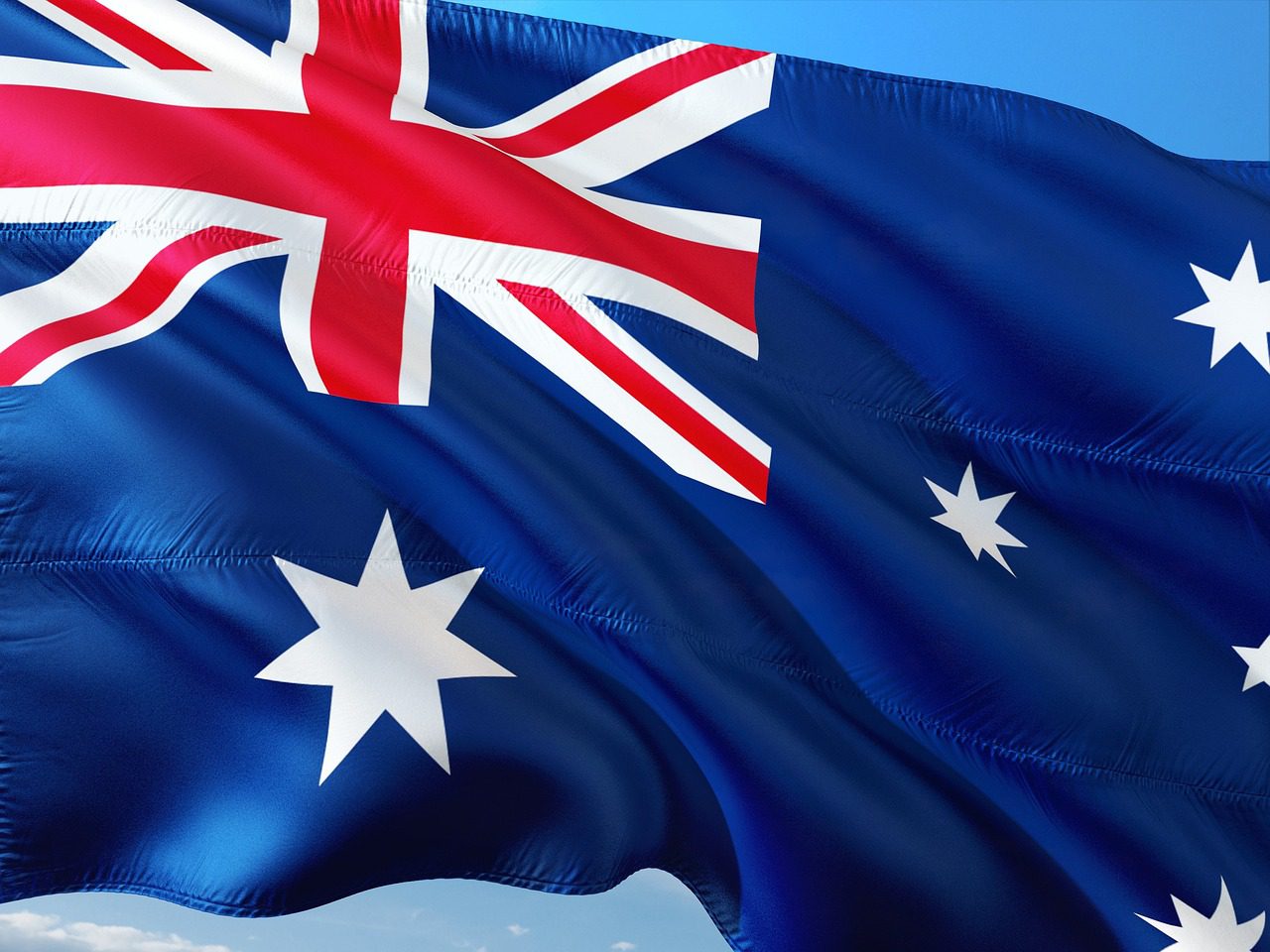
Australia: A Land of Beauty, Diversity, and Opportunity
Australia is a nation and a continent. It is the smallest continent in the world but the sixth-largest country. It is located in the Southern Hemisphere. It is surrounded by the Pacific Ocean and the Indian Ocean. The country is renowned for its unique landscapes, rich culture, and modern way of life. Australia is famous for the Sydney Opera House, the Great Barrier Reef, deserts, and unique animals like kangaroos and koalas. The country also boasts new cities, colorful festivals, and best universities. We will explore Australia in detail in this article. We will take into account its history, geography, people, culture, economy, and attractions. We will also present surrounding countries and territories to observe its status in the world.
Geography of Australia
Australia is situated between the Pacific Ocean and the Indian Ocean. Its land area is around 7.7 million square kilometers. Mainland Australia is divided into states and territories.
- The six states are: New South Wales, Victoria, Queensland, South Australia, Western Australia, Tasmania (an island state),
- The two major territories are: Northern Territory, Australian Capital Territory (ACT)
It is varied in landscapes. It has mountains like the Great Dividing Range in the east. Deserts in the interior of the country are known as the Outback. Tropical rainforests are found in the north. The coral reefs and beaches border the coastlines.
Climate
Australia’s climate is diverse due to its extensive size. It is tropical with hot and humid summers in the north. Temperate with mild summers and cool winters in the south. Dry and desert-like in the center. This diversity provides Australia as a vacation destination throughout the year. Visitors can have a beach holiday in the summer and snow skiing in the mountains for winter.
History of Australia
Indigenous Australians
The Australian past began with the Indigenous people. They inhabited the continent more than 65,000 years ago. Aboriginal Australians and Torres Strait Islanders developed advanced cultures, traditions, and spirituality. They crafted rock paintings, music, and stories that are still revered today.
European Discovery and Colonization
Captain James Cook had proclaimed the east coast of Australia for Britain in 1770. In 1788, the British Fleet arrived at Botany Bay for the first time. They established a penal settlement at Sydney. Year by year, increasing numbers of settlers arrived to live there. The expansion repeatedly created tension with Aborigines. Their land, culture, and population greatly suffered.
Federation
On 1 January 1901, the colonies were united as the Commonwealth of Australia. This was the beginning of the modern country.
Modern Development
Australia fought in World Wars I and II. After the wars, it welcomed migrants from Europe, Asia, and other continents. Today, it is a multicultural country with a strong economy and democratic government.
People and Culture
Population
There are about 26 million Australians. Most of them live in the coastal towns of Sydney, Melbourne, Brisbane, and Perth. The interior is uninhabited because of the desert nature.
Multiculturalism
Australia is a highly multicultural country. More than 200 countries have settled here. This diversity leads to food, festivals, languages, and traditions being diverse.
Language and Religion
The dominant language is English, although many people have another language spoken at home, including Mandarin, Arabic, Italian, and Greek. The most common religion is Christianity, but Islam, Buddhism, Hinduism, and other religions are also present. Many Australians are also irreligious.
Sports and Lifestyle
Sports play a big role in Australian culture. Popular sports include cricket, rugby, Australian Rules football, soccer, and tennis. The country has hosted major events like the Olympic Games and the Cricket World Cup. Australians love outdoor activities like surfing, swimming, hiking, and camping. The relaxed lifestyle makes the country attractive to visitors and immigrants.
Economy
Australia has one of the strongest economies in the Asia-Pacific region. Australia is a high-income country with strong trade ties.
Key industries are:
- Mineral industry (coal, iron ore, gold, natural gas), Agriculture (wheat, beef, wool, wine)
- Tourism (Great Barrier Reef, Sydney, Outback), Education (international students attend universities)
Finance and services
Australia’s main exports include minerals and produce, sold mostly to China, Japan, South Korea, and India.
Government and Politics
Australia is a democratic country. It is a constitutional monarchy. The United Kingdom’s King is also the King of Australia. The Governor-General represents the King. The country is governed by the Parliament and the Prime Minister. The capital city is Canberra, in the Australian Capital Territory.
Major Cities in Australia
Australia is a large country with many cities spread across its states and territories. Every city has its own characteristics, including culture and points of interest. Some are large and modern. Some are small and relaxed. Together, they offer an overall picture of Australian existence. Here, we will examine the large cities in great detail. We will learn about their history, culture, attractions, and lifestyle.
Sydney
Sydney is the largest city in Australia. It is located in New South Wales on the eastern coast. Sydney is confused with the capital city by most, but it is not. However, it is still the most iconic city in the country.
History and Culture
Sydney was the place where European settlers first arrived in Australia in 1788. Sydney began as a small penal colony and developed into a global city. It became a financial center, business hub, art center, and tourism hub. Sydney also has a multicultural identity. Asians, Europeans, and individuals from the Middle East have inhabited Sydney.
Attractions
- Sydney Opera House is the most symbolically famous building. It is famous in the world for its sail-shaped architecture. Harbour Bridge is a symbol as well.
- One can walk or climb the bridge for beautiful views. Bondi Beach and Manly Beach are favorite places of surfers and sunbathers.
- Royal Botanic Gardens offer peaceful greenery in the middle of the city. Blue Mountains are close and make a wonderful day trip.
Lifestyle
Sydney is a vibrant city with a fast pace. It is replete with restaurants, malls, and entertainment centers. But it is also expensive. However, people enjoy the beach culture and outdoor activities.
Melbourne
Melbourne is the capital of Victoria. It is the second largest city and often dubbed the cultural hub of Australia.
History and Culture
Melbourne grew rapidly during the gold rush of the 1850s. Gold made Melbourne wealthy and cosmopolitan. Melbourne today is renowned for creativity and diversity. It has robust Italian, Greek, Chinese, Indian, and more communities.
Attractions
- Federation Square is the cultural hub with galleries and museums. The National Gallery of Victoria is the oldest Australian art museum.
- Street art in city laneways is lively and well known all around the world. The Royal Botanic Gardens and Melbourne Zoo should not be missed.
- Local to this area is the world-class Great Ocean Road drive.
Sports and Lifestyle
Melbourne is mad about sport. It’s the place for Australian Rules Football (AFL). It’s also home to Australian Open Tennis and the Formula 1 Grand Prix. Melbourne has a lively café scene. Melburnians are coffee, food, and art mad. The weather can change overnight, though – locals chuckle and say you can experience “four seasons in one day.”
Brisbane
Brisbane is the capital of Queensland. It is the third-largest city in Australia. It is hot and has a laid-back lifestyle.
History and Culture
Historically, Brisbane was a conservative city, but now it is urbanized and growing. It is a young city with many students and professionals.
Attractions
- The South Bank Parklands have gardens, restaurants, and a man-made beach. The Gallery of Modern Art (GOMA) is one of the biggest in the country.
- The Story Bridge offers adventure climbs and stunning views. The Lone Pine Koala Sanctuary is where visitors can hold a koala.
Surroundings
Brisbane is close to the Gold Coast and Sunshine Coast, which are famous for beaches, theme parks, and surfing.
Lifestyle
Brisbane is less crowded than Sydney or Melbourne. It is more affordable and relaxed. People enjoy outdoor activities like cycling, walking along the river, and water sports.
Perth
Perth is the capital of Western Australia. It is the planet’s most isolated major city. The nearest big city is over 2,000 km away. Despite that, Perth is a bustling and modern city.
History and Culture
Perth developed because of mines and minerals. Thousands of workers and professionals came here for jobs. Today, it is a rich city with a good standard of living.
Attractions
- Kings Park and Botanic Garden is larger than New York’s Central Park. The Swan River flows through the city and offers boating and walking trails.
- Cottesloe Beach is one of Australia’s most beautiful beaches. Rottnest Island off the coast is famous for quokkas, small smiling animals.
Lifestyle
Perth enjoys a sunny climate with many clear days. It is more relaxed than Sydney or Melbourne. People enjoy the beach, barbecues, and outdoor living.
Adelaide
Adelaide is the state capital of South Australia. It is smaller but extremely quaint. It is popularly known as the Festival City.
History and Culture
Adelaide was planned and built in the 19th century. It was not a convict settlement, unlike Sydney. Instead, it was built by free settlers. This gave the city a unique identity.
Attractions
- The Adelaide Oval is one of the most scenic cricket grounds. The Art Gallery of South Australia has great collections. The Central Market is full of food and culture.
- The Barossa Valley and McLaren Vale around are world-class wine regions.
Lifestyle
Adelaide is relaxed and affordable. It is not too busy and full of parkland areas. The people have a good work-life balance.
Canberra
Canberra is the capital of Australia. It’s situated in the Australian Capital Territory (ACT). Everybody is shocked that Canberra, not Sydney or Melbourne, is the capital.
History and Culture
The administration in 1908 chose Canberra as capital because Sydney and Melbourne couldn’t agree which city should be the capital. Canberra is a planned city, built by American architects Walter and Marion Griffin.
Attractions
- Parliament House is the center of Australian politics. The Australian War Memorial is a remembrance of soldiers.
- The National Gallery of Australia and the National Museum are rich in culture. The Lake Burley Griffin precinct is perfect for walking and cycling.
Lifestyle
Canberra is not as busy as other big cities. It is quiet, clean, and neat. There are a lot of government employees who reside there. The lifestyle is family-orientated with plenty of schools and parks.
Darwin
Darwin is the Northern Territory’s capital. It is tiny but very important. It is tropical and located close to Asia.
History and Culture
Darwin holds a special place in history. It was bombed by the Japanese in World War II. It was rebuilt and became a trading center for Asia. It has a multitude of cultural influences, especially Indonesia and the Philippines.
Attractions
- The Mindil Beach Sunset Market is famous for handicrafts and food. Crocodiles can be seen close-up at the Crocodylus Park.
- Kakadu National Park and Litchfield National Park are nearby with waterfalls, rivers, and Aboriginal rock art.
Lifestyle
Darwin is casual and multicultural. It is hot throughout much of the year. Folks enjoy fishing, outdoor eating, and markets.
Hobart
The capital of island state Tasmania is Hobart. Hobart is Australia’s southernmost city.
History and Culture
Hobart was a convict settlement in the early 1800s. It still has most of its old buildings. It’s renowned nowadays for art, history, and the outdoors.
Attractions
- Mount Wellington towers over the city and offers breathtaking views. The MONA (Museum of Old and New Art) is a truly quirky museum.
- Salamanca Place is composed of old sandstone houses, now cafes and shops. The nearby Tasmanian Wilderness World Heritage Area is filled with forests and wildlife.
Lifestyle
Hobart is serene and artistic. It is a small town but has modern amenities. The city is also near nature, and thus individuals are fond of hiking, sailing, and the outdoors.
Lifestyle
Hobart is quiet and artistic. It has a small-town feel but with modern comforts. The city is close to nature, so people enjoy hiking, sailing, and outdoor life.
Natural Wonders
Great Barrier Reef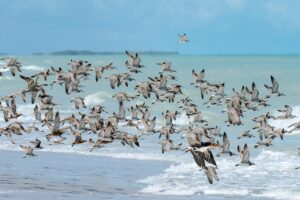
The Great Barrier Reef is the world’s largest coral reef system. It extends 2,300 kilometers along Queensland’s coast. It contains coral, rainbow-colored fish, and marine life. Snorkeling and diving are popular sports.
Uluru (Ayers Rock)
Uluru is a giant sandstone rock in the Northern Territory. The Anangu people believe it to be sacred. During sunrise and sunset, it turns magical color.
The Outback
The Outback is the vast desert center of Australia. It is filled with red sand, rock country, and solitary towns. Visitors get to view wildlife, Aboriginal people, and starry nights.
The Great Ocean Road
It is a coastal road trip in Victoria. It has cliffs, beaches, and the famous rock formations called the Twelve Apostles.
Kakadu National Park
It is located in the Northern Territory, which is replete with wildlife, rivers, and Aboriginal artwork. It is a World Heritage Site.
Education in Australia
Australia is a popular destination for overseas students. It has top-class universities including:
- University of Sydney University of Melbourne Australian, National University, University of Queensland
Overseas students come to pursue fields like medicine, engineering, business, and environmental science.
Tourism in Australia
Tourism is a huge industry. Millions of visitors come each year to visit cities, beaches, and natural wonders. Some of the best-known activities are:
- Surfing Bondi Beach. Rock climbing Sydney Harbour Bridge. Wine country touring in South Australia. Viewing the Blue Mountains west of Sydney. Camping in national parks. Australia also specializes in eco-tourism and adventure travel.
Wildlife
Australia is home to unique animals not found anywhere else. These include:
Kangaroos, Koalas, Platypus, Emus, Wombats, Echidnas
It also has dangerous species like crocodiles, snakes, and spiders. Despite this, wildlife tourism is very popular.
Surrounding Places and Countries
New Zealand
To the east of Australia lies New Zealand. It is famous for its mountains, lakes, and Maori culture. The majority of the tourists visit New Zealand as well as Australia during the same visit.
Papua New Guinea
Above it is Papua New Guinea. It is a country with dense rainforests and tribal cultures.
Indonesia
To the north-west of Australia lies Indonesia. It is an island group of a few thousand islands, one of which is Bali, a tourist destination.
Pacific Islands
Australia is close to various Pacific Island nations like Fiji, Vanuatu, and Solomon Islands. These islands boast renowned beaches, coral reefs, and relaxed culture.
Antarctica
To the south lies Antarctica. Australia is one of the closest countries to the frozen continent and has research stations there.
Challenges Facing Australia
Despite its success, Australia does have challenges. Climate change affects the Great Barrier Reef and bushfire hazards. Water scarcity is a problem in some parts. There are also issues relating to Indigenous rights and property rights.
Australia and the World
Australia is an active player in global organizations. It belongs to the United Nations, the Commonwealth, and Asia-Pacific groups. It maintains close ties with the United States of America, the United Kingdom, and surrounding nations in Asia.
Conclusion
Australia is a land of contrasts and opportunities. It has old Aboriginal customs and technologically advanced cities. It boasts deserts, forests, reefs, and snow-capped mountains. Its people are diverse and welcoming. For visitors, there are endless adventures in Australia. For scholars, there is world-class education. For businesses, there is a strong economy. Surrounded by friendly neighbors and lovely seas, Australia is one of the most unique countries in the world. It is where tradition blends with modernity, and nature blends with culture. In fact, Australia is a Southern Hemisphere gem.

